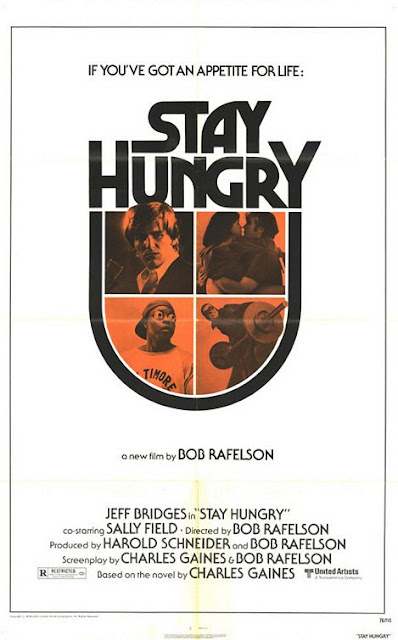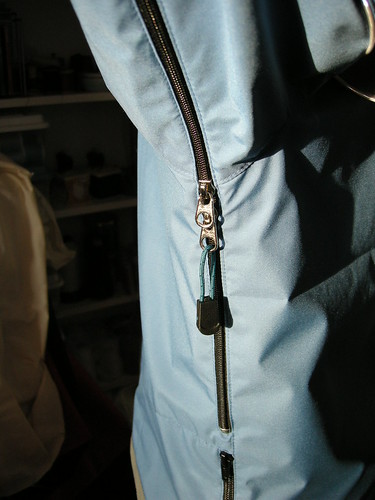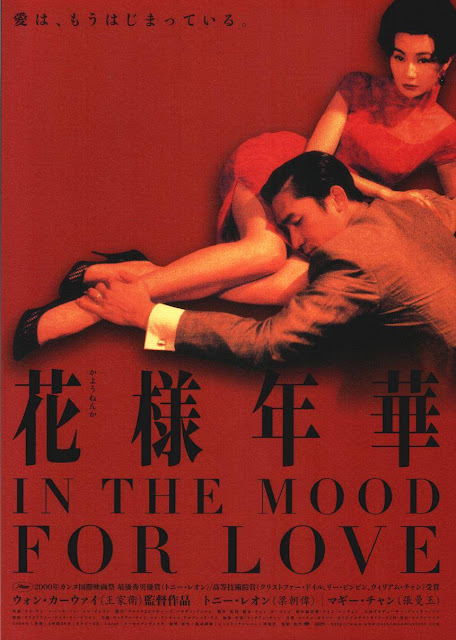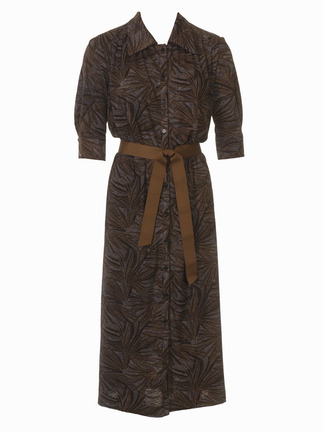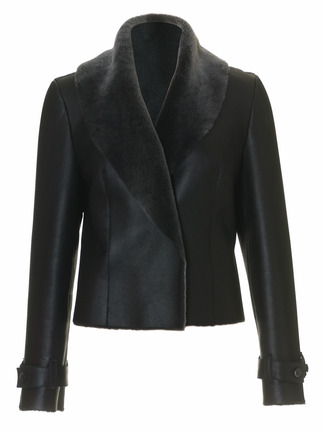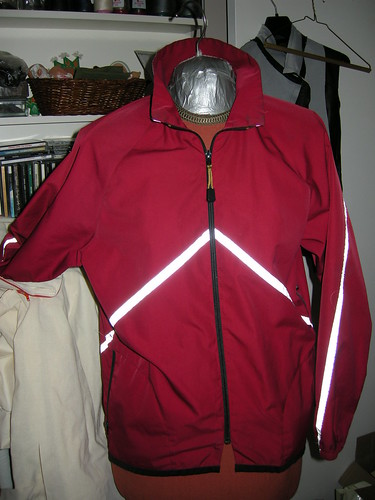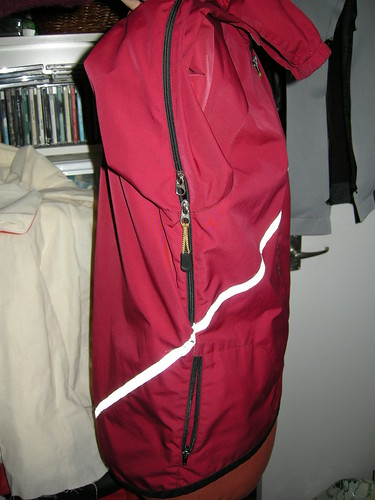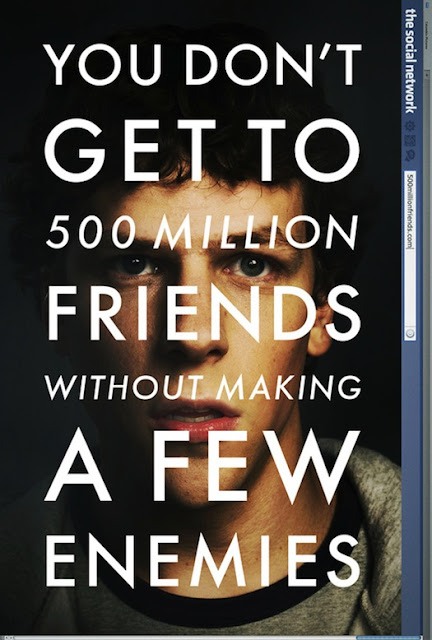Monday, January 31, 2011
Information from the Blue Shield on the Situation in Egypt
LCCHP and Other Organizations Warn of Cultural Heritage Emergency in Egypt
The undersigned cultural heritage and archaeological organizations express their concern over the loss of life and injury to humans during the protests in Egypt this week. We support the desire of the Egyptian people to exercise their basic civil rights. We also share their concern about the losses to cultural heritage that Egypt has already sustained and the threat of further such losses over the coming days.
Brave actions taken by the citizens of Cairo and the military largely protected the Cairo Museum. However, the numerous sites, museums and storage areas located outside of Cairo are even more vulnerable. As the prisons are opened and common criminals are allowed to escape, the potential for greater loss is created. A recent report from Egyptologist Professor Sarah Parcak of the University of Alabama in Birmingham states that damage has been done to storage areas and tombs in Abusir and Saqqara and that looting is occurring there and in other locations.
We call on the Egyptian authorities to exercise their responsibilities to protect their country’s irreplaceable cultural heritage. At the same time, we call on United States and European law enforcement agencies to be on the alert over the next several months for the possible appearance of looted Egyptian antiquities at their borders.
Archaeological Institute of America
Cultural Heritage Center, The University of Pennsylvania
Lawyers’ Committee for Cultural Heritage Preservation
U.S. Committee of the Blue Shield
The fur is flying
Here are some in-progress photos. First, introducing Furla.
 Here you can see the original smock-like cut of this coat. I've removed the original line-backer shoulder pads. The front and back are actually gathered onto the yoke. The sleeves extend from the yoke, and are pleated at the cap for extra fullness, and pleated/gathered into fur cuffs. The armscye is extremely deep (hits me at about waist level). The back-neck length of the coat is a full 50" (127cm). It hits me only a few inches above my ankles. And it's very large - the original owner was clearly tall and a big lady! This coat must have cost a fortune when new, there is SO much mink in it.
Here you can see the original smock-like cut of this coat. I've removed the original line-backer shoulder pads. The front and back are actually gathered onto the yoke. The sleeves extend from the yoke, and are pleated at the cap for extra fullness, and pleated/gathered into fur cuffs. The armscye is extremely deep (hits me at about waist level). The back-neck length of the coat is a full 50" (127cm). It hits me only a few inches above my ankles. And it's very large - the original owner was clearly tall and a big lady! This coat must have cost a fortune when new, there is SO much mink in it. 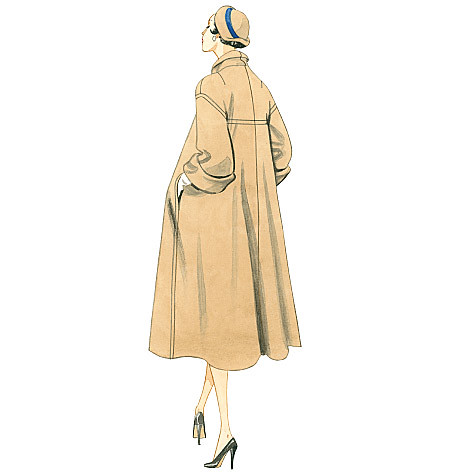
Now, introducing my first muslin of the pattern. Here are some pictures from the Vogue site to show you what it's supposed to look like.
 I see I managed to accomplish the look of stunned concentration that seems to go with the task of taking-a-picture-of-myself-in-a-mirror.
I see I managed to accomplish the look of stunned concentration that seems to go with the task of taking-a-picture-of-myself-in-a-mirror. These photos show a couple of problems with the pattern. It's too voluminous in a thin fabric. I'm going to be using a thin fabric.
It won't fall beautifully like a wool coating, which is what this pattern is designed for - check out this photo (also from the Vogue site, and yes, the length shown here is more accurate than the line drawings - the back length of the coat pattern is 45" or 115cm).
I also found that the dropped shoulder sewn according to the pattern is not sufficiently dropped to get the graceful look on the pattern envelope - far from it, it stuck out most unattractively. In the above photo, I have pinned a curved dart starting at the curve of my shoulder which will pinch out 3cm in total from the armscye at the shoulder. There is also (surprisingly, since the cap is very flat) quite a lot of ease in the sleeve which contributed to the unattractive stick-outy look. I'm going to have to take out a lot of width at the sleeve cap, but I don't want to lose the height since the angle of the sleeve is good.
So where am I going to remove volume? First, from the lower front at the CB - I may take out about 20cm at the hem. Second, in the front, I'm taking a vertical tuck of about 3cm in width to the outside of the bust dart, tapering to nothing at about the shoulder point. I've pinned it out in the above photo.
The other adjustments to the pattern I'll have to make are dictated by Furla's neckline. It is about 1.5 cm lower at the back and wider at the shoulder than the Vogue pattern. I want the necklines to more or less match.
As for Furla, my plan is to leave as much of it as I can intact. I'll let the yoke of the outer coat skim over Furla's gathers, for example. I have removed the upper collar for future purposes. The under collar will line the Vogue shawl collar which I will wear standing for extra coziness. I have to take the back yoke and collar in at CB by approximately 3cm because it's far too big in that area. I am taking off the fur cuffs, which I will save, maybe for some leather mittens since they are quite small. I will definitely have to remove width from the sleeve below the arm, and take the coat in at the sides, below the sleeves. Hopefully this will have the effect of raising Furla's armscye enough to match the Vogue pattern, which is also pretty low in that area. I will also have to shorten it. My current plan is to simply attach the fur to the edges of the coat at CF and around the collar, which will let the fur peek out only slightly.
I'm taking this a little bit slowly since I have to think it through in terms of construction and inner materials as I go. I expect to use lambs wool to pad the entire coat yoke, and I think I'll use fusible interfacing to stiffen the collar and front edges enough to support the fur. Closures remain to be decided but I have some big buttons in stash. Maybe round elastic button loops? Should the cuffs be fur or fabric? Any thoughts on any of this?
Wish me luck!
Archaeological Looting Crisis in Egypt
"Verified by Mohammad Megahed: Immense damages to Abusir and Saqqara, all magazines and tombs which were sealed were entered last night. Only Imhotep Museum and adjacent central magazines protected by the military. In Abusir all tombs opened. large gangs digging day and night everywhere"
The damage is *vast*.
It seems that some of the storage magazines at South Saqqara and Abusir have been looted-hard to say how much was taken and the extent of the robbing. SCA representatives are only today able to check on the museums/storage magazines, but early reports suggest major looting. If you all could please contact anyone who can help and put them on "high alert" for Old Kingdom remains and Egyptian antiquities in general, and please spread the word to law enforcement officials worldwide. Egyptian looters (who may be encouraged by outside Egypt entities) may try to use the general confusion to get things out of the country.
Other bad news: prisons in Qena and Armant (next to Luxor) have been emptied, so people fear major looting will occur in that region.
Reports still abound for major looting in the Alexandria Museum---but those reports are hard to confirm. The violence has been worse in Alexandria, and there have been few police reports there."
Sunday, January 30, 2011
Luxor and Giza Sites Under Military Guard
Meanwhile, the Giza pyramids have been closed and placed under military guard.
Video Showing Egyptian Army Inside Egyptian Museum
[Update November 9, 2011: Associate Press video at http://www.youtube.com/watch?v=wTOf0x-eGU0].
Update on the Egyptian Museum in Cairo
The military later arrived on the scene. News outlets indicated that the military arrived around 5:15 a.m. local Cairo time on Saturday (January 29). CSM reports that the potential thieves were rounded up amid chants of "Thief. Thief" by the demonstrators.
I observed video on CNN showing shattered glass cases that house the well-known Middle Kingdom models of daily life found on the second floor of the museum. It appears from the video that parts of the models are damaged or missing.
Let us remember that the Egyptian people and their right to self-determination are much more important than artifacts. But more will be posted here about any news related to cultural heritage since that information is hard to come by at the moment.
Wednesday, January 26, 2011
The Swimmer (1968) Directed by Frank Perry
Nick:
Perceptions of how I think I am seen by other people is something I don't think about too much. We all want to be thought of in a good light. I don't send around a questionnaire asking "Am I a good egg?" to friends and acquaintances. Maybe I should to get a better understanding of what my friends really think of me. The like button on Facebook is probably the closest we get to some kind of consensus on our musings and popularity amongst our friends. But what if you're like Ned Merrill in The Swimmer? What if you are blighted by something out of your control, the loss of a job, some unsavory episode or misfortune, which means people talk about you without you knowing, and formulate an opinion of yourself that you don't quite see.
The Swimmer is one of those films where you wonder how this picture got green-lit, so strange is the topic. After being away for awhile (we don't really know where), Ned appears at some old friends poolside. After realizing that there are swimming pools in every home across the rich Connecticut suburb valley where he lives, Ned decides to swim home. Along the way, pool by pool, he meets old friends, neighbors, lovers and enemies, who are all initially pleased if a little wary to see him. But as Ned's journey progresses, some uncomfortable truth about himself comes to pass.
Burt Lancaster plays Ned. Burt spends the whole movie in his swimming trunks. What a body for a then 55 year old Lancaster. I always think Burt has the most incredibly wide shoulders (he started his career as an acrobat in the circus). It's easy to think of Burt as this über-macho leading man of the 1950's and 1960's cinema. But then think of the quality pictures Lancaster made: From Here To Eternity, The Birdman Of Alcatraz, The Sweet Smell of Success, Seven Days In May, The Leopard and Atlantic City amongst many others. You realize that Lancaster was one of the great screen actors, even though there is no fuss surrounding him like Brando or Nicholson. The Swimmer is a cult favorite nowadays hiding one of Lancaster's best roles. Watching his journey unravel is fascinating.
Astrid:
Some part of me is always missing The Strand book store on the corner of 12th street and Broadway (Manhattan). In a dream life, I would live only a walking distance from there. Physically, the distance to that scenario is huge at this moment. Right now I am reading Just Kids by Patti Smith and it makes me long for a past I never had. What is disturbing to realize in life, is how the same ingredients can lead to such different results. This is true in cooking but it is also true with people. Is it a question of luck, magic, timing, location, destiny or something even more flimsy and undefinable?
The Swimmer portrays a lost man in the middle of his disconnection from what used to define him. I have not seen many films so fully dedicated to an episode like this without the need to explain how he got there or where he will end up. It is disturbing to see the man's nakedness and vulnerability in front of his old neighbors who do not understand why he is back – their reactions range between pretending everything is normal to baffled expressions of anger. His idea 'to swim home' through all the pools in the neighboring houses appears peculiar but inventive at first, but slowly the audience begins to see the madness of the effort. At the present the swimmer does not remember, or he has repressed, the traumatic events in his resent past which have changed the course of his life.
I guess what I am trying to say with the help of The Swimmer and Patti Smith is that me ending up as a regular customer of The Strand is as likely as it is unlikely. The future will be a chain of events somewhat influenced by my aspirations but also defined by circumstance – most likely I will be both the swimmer and some woman in the sun chair by the pool with a drink in her hand. This sense of not knowing while constantly intrigued is crucial for life.
Monday, January 24, 2011
Stay Hungry (1976) Directed by Bob Rafelson
Astrid:
I am compelled to admit that this New Hollywood piece from the mid-1970s did not touch and inspire me as much as I hoped – or as much as it should considering that I am turning into a serious 1970s movie nerd. Was it my own mind wandering or did they really mumble so much in Stay Hungry that 24 hours later I cannot bring myself to focus on the experience?
Anyway, here's what I think: in the 1970s Hollywood regularly churned out quality movies, which concentrated on telling a great story. Yes, they had wonderful actors, fabulous new directors bursting with enthusiasm, they had brave cinematographers, crazy producers and all the mind-altering substances imaginable, but at the center of it all was the narrative. Something needed to be expressed. My claim being that the New Hollywood films were not selling anything to the audience.
Fastforward a couple of decades to the present. Here I am feeling uncomfortable as this thought turns into text, but I feel that now even the smallest of indie films are selling something. If nothing else, they are selling us a great indie soundtrack, a way of life, a car, a PC perspective on something controversial, and obviously, an actress or an actor of the star cult. Is it just my inability to distance myself from the present making me uneasy in my seat at the local multiplex? Is it my own paranoia? Or am I right in feeling that watching a film is about conscious and unconscious processes of decoding messages of what I should purchase?
Stay Hungry gives us Arnold Schwarzenegger's first Hollywood role. To me he represents almost everything that has gone wrong between the 1970s and the present moment. I'm sure that does not come as a surprise. What surprises me is that in this film (the director Rafelson earlier made the must-see Five Easy Pieces) Arnie is not a joke. His physical appearance and his role actually conjoin to claim that Arnie did not necessarily go to Hollywood to become a robotic killer or a mayor. Maybe he was just a guy who wanted to be an actor. Maybe he was a young man with low self-esteem. Something changed, or even died in the stories and in the expressions of Hollywood – but I cannot blame Arnie for that. Not anymore.
Nick:
I never went in for the whole body building thing. It seemed to be something that rose to prominence during my adolescence. Pumping Iron. From a very early age, much like my mother, I was dealt the thin look. No muscles on me. I had a metabolism that seemed to keep me thin. I say had, because as I've crawled into middle age, a widening of girth has accelerated. Nowadays I have an increasing waistline (the area where my body seems ripe for expansion). Of course, exercise is something I rarely partake in. To look at Arnold Schwarzenegger debuting in Stay Hungry you realize the level of dedication it takes to look like some kind of unnatural freak. Hey, no six pack on me thanks.
Watching Stay Hungry again after many years I realize that Arnold could have had an interesting career in art house movies, playing the gentle muscled giant. But Hollywood came calling, saw the muscles and little else and so Schwarzenegger became The Terminator or Conan or some other killing machine. An opportunity missed because Stay Hungry shows another use for Arnie. The former mayor of California could do worse than revisit Stay Hungry to get an idea as to what kind of vehicle to restart his movie career with.
Stay Hungry is a soft, entertaining picture, with intricate, comedy relationship webs set against a back drop of syndicate property expansion. Man of the moment Jeff Bridges turns in another stellar turn as the rich boy who befriends the freaks at the gym, falls in love and decides to do the right thing. A great supporting cast of R.G Armstrong, Sally Field, Robert Englund and Schwarzenegger gives ensemble credence. Bob Rafelson was on something of a roll following on from Five Easy Pieces and The King Of Marvin Gardens. He'd never top that three-in-a-row run, but then who would? Stay Hungry is almost forgotten nowadays. It deserves to be found like it's predecessors. A small wonder.
Ready for spring?
This little number is made with a pattern which for some reason I think was the house brand of the late-lamented Textile Outfitters store in Calgary. It's Storm Mountain Designs "Golden Triangle Cycling Jacket". I can't find any sign of its origins in the packaging or on the internet. My copy is an antique - imagine, the multi-size pattern looks suspiciously like an actual blue print. Does anyone use that technology any more?
Anyhow, here it is - pretty blue goretex purchased last year from Ressy's Coop, lined with some sort of athletic mesh in white (from stash) and embellished in a practical sort of way with retro-reflective piping (Montreal, St. Hubert Street) and nylon ripstop printed all over with a retro-reflective pattern (stash). I used the retro-reflective fabric at the collar, back yoke and lower band.


I split the front to create a yoke seam where I could insert piping, and did the same on the sleeves. The piping starts at the back yoke, and runs diagonally across the sleeve so you can see it in the front. To the right, the back, in pretend biking position. The lower back curves down so that when I'm really on the bike, there is no risk of gaposis; the hem should be more or less horizontal in that position.
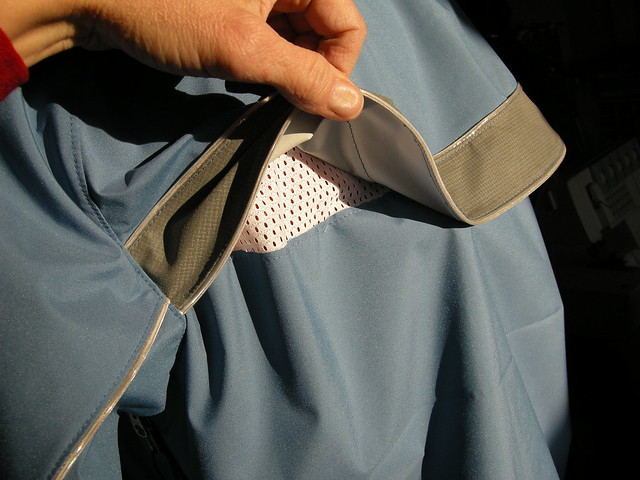 In the photo to the left, you can see how the upper back yoke is only attached at the CB. Even though goretex is more breathable than many waterproof fabrics, I expect it to be pretty steamy on occasion and this will help. If you click on the photo to the right, you can sort of see how the retro-reflective stuff performs. Naturally it's even more startling in the complete dark, but that's pretty hard to photograph!
In the photo to the left, you can see how the upper back yoke is only attached at the CB. Even though goretex is more breathable than many waterproof fabrics, I expect it to be pretty steamy on occasion and this will help. If you click on the photo to the right, you can sort of see how the retro-reflective stuff performs. Naturally it's even more startling in the complete dark, but that's pretty hard to photograph!For even more ventilation, I added pit zips (these are zippers with 2 pulls that operate from the middle). I added a plastic pull on a cord to make it easier to grab the pull when moving. There's another on the front zipper.
Again, thinking about air flow and being too hot, I made the sleeve cuffs adjustable using a velcro-ed tab. To my astonishment, I found coordinating blue velcro in the stash.
The pattern calls for a lot of fancy pockets, but I only used the lower front ones that open at the side seam. I'm strictly a practical biker (i.e. I commute to work in the 8 or so months a year when there's no snow) so I have no need for stashing energy bars or whatever the high-test cyclists put in those pockets found at the lower back of almost every cycling jersey or jacket sold around here.
I'll enter this in the PR activewear contest currently running. Vote for me!
Friday, January 21, 2011
Pastor Terry Jones' proposed visit to the UK
Climate protests
Environmental protests have received many headlines recently, with trespass and criminal damage being committed at a number of power stations in an attempt to interrupt their operation or shut them down altogether.
The protestors have often sought to argue that they were acting to prevent the greater wrong of the carbon emissions of the stations in question. Surprisingly, on at least one occasion (the Kingsnorth protestors in Kent) this argument has earned them an acquittal. Perhaps equally surprisingly some lawyers have written in support of this (see eg this entry on the respected UK Human Rights Blog) as well as making other radical suggestions such as expanding the law of tort to include the whole planet as a ‘neighbour’ and so on.
Two points should be made in response. First, as to the protestors, in a country with freedom of speech, freedom of association, a wide scope for lawful protest and, most of all, the ballot box, unlawful resistance can rarely be justified.
Secondly, it is laudable that lawyers follow and wish to act on environmental concerns. It should be obvious, though, that issues such as whether or not any particular power station should continue in operation need to be decided as part of the national energy policy. Formulating that policy involves highly complex questions requiring primarily engineering, chemical, economic and physical science expertise – how much power is needed, how much it is possible to generate and by what means, how much each option will cost, and what environmental effects will follow. To be blunt, lawyers and judges are not particularly qualified to answer any of those questions – any more than scientists and economists are best placed to determine technical legal points.
Thursday, January 20, 2011
In The Mood For Love (2000) directed by Wong Kar-Wai
Nick:
Butterflies, the stomach variety. It's conceivable that you have felt this feeling if you have ever had a serious infatuation with someone and merely being in their presence can bring on that anxious stomach ache. It's a prequel to longing and wanting and not having. It's a feeling of desire. Many people have argued that once that feeling goes, so has the romance. Watching In The Mood For Love brought that feeling back. Butterflies.
There is so much that is good in Wong Kar-Wai's picture. He respects the audience enough not to have to spell everything out. You can use your imagination here. You can dream. This feeling is helped by Christopher Doyle's amazing cinematography. The principle characters are lithe creatures, the way they slink across the screen in slow motion. Maggie Cheung wears the tightest, coolest dresses, enhancing Mr Chow's sense of can't-have-sexuality. Tony Leung wears a white shirt like no other. His smoking rivals Belomondo's. Not since early Godard has the screen been lit up by such a cool couple.
But unlike Godard there is no need for pretension or theory. There is a sense of unrequited love in In The Mood For Love which is against the prevailing sexual freedom that seems to exist in 1960's Hong Kong. Even the closest loved ones of the main protagonists have "got it on". Mrs Chan and Mr Chow just can't bring themselves to cross that barrier, the moral high ground is theirs. The longing goes on, and the real deal of romance is realized.
Astrid:
In The Mood For Love was a film I missed out on when it came out. Everybody talked about it and I could see it had caught the imagination of my young friends. There were posters and imitation dresses and I could see the beauty of these things, but I missed the narrative that had sparked this adoration. Last night the film unraveled in our living room. It seemed otherworldly with its saturated colors and its reserved passion. It had all the characteristics that would have made me a fanatic ten year ago.
My immediate afterthought is that In The Mood For Love has expressed something important of the nature of a fleeting individual life. It depicts what I have come to think recently: that personally and emotionally crucial events in an individual's life/life story rarely end up being the visible facts of her life. They do not end up in the biography afterwards or in the grand children's memory. As far as the the outside world is concerned, Li-zhen has no connection to Mr. Chow, yet for the rest of their lives their encounter marks them.
Another astonishing life-likeness appears at the very end of the film. Mr. Chow is in Cambodia and it is four years since the time he spent with Li-zhen. I have no idea what he is doing in that country. The camera follows him to a temple, then it stays there seeing the ruins, contrasting light, letting the character of the story slip away. Events and locations seem arbitrary in life. They can be lined together and connected through narrative, but often its thread is broken. Is that tragic or is it precisely the beauty of it?
Wednesday, January 19, 2011
The Front (1976) & Tin Men (1987)
So the award season is here. I must admit that on the morning after the Golden Globes I steered immediately to view the red carpet pictures and ignored any information on who and what films won.
It is strange to find myself so unconsciously and strongly pulled by the star myth. Luckily, I later watched a clip of Ricky Gervais' opening speech as the presenter of the gala. He reminded me that cinema is much more sinister and complex a phenomenon than the glamor and plasticity of the red carpet conveys.
There have been much more serious times for cinema of course. The Front is a great reminder that not so very long ago, American actors, writers, directors and the rest of the professionals in cinema could find themselves on a black list – unemployed and politically victimized. I am especially fascinated by this historic example because it reveals how art has been considered a dangerously influential form of expression. Creativity has threatening explosive potential. Things can change.
Tin Men relates to The Front through their depiction of the times, the middle of the 20th Century. Where The Front discusses how artistic creativity was to be controlled in fear of change or even revolution, Tin Men shows that even the working classes did not survive without being surveiled and tried. There was a general suspicion from the men in power towards everyone else. What was it with this paranoia, is it still in the air? Both films seem to be saying that actually artists as well as the everyman were only consumed by the mundane: love affairs, who has a bigger car, how to pay the bills or keep the tax man at bay.
What about women? Well, these films did not discuss women as artists or as everywomen. Barbara Hershey is one of my favorite actors, but in Tin Men she was just a canvas or a prop.
Nick:
It's a spineless gutless world and we're all going to hell. I could say this is how I've been waking up every morning, covered in guilt. But I'm not. However harsh the realities of life are for myself, they are obviously a lot harder for other people. Where is my voice of protest through these dark ages? Why am I not making a stand for the things I believe in? Most probably because I'm selfish, and the 'right' cause hasn't come along for me to support, I won't be supporting anything. I'll just be cynically commenting on how everything should be better.
The Front is as close as you can get to a Woody Allen picture without actually being one. It stars Allen, is produced by Allen's regular producers (Rollins & Joffe), co-stars Allen actor (Michael Murphy) and has the pace and the feel of a an Allen picture. Unlike typical Allen, it's political. Allen plays The Front of the title role, a cashier worker who ends up fronting scripts for blacklisted writers during the communist witch hunt of the 1950's. McCarthyism is something Howard Prince (Allen) thinks he can beat as he becomes accustomed to the fake life of a successful scriptwriter. The Front squeezes a great performance out of Allen and has one of the sweetest pay-off lines. It also comes across at times like a public health warning about the consequences of McCarthyism. Despite this it's an enjoyable picture. Martin Ritt directs, from a script by Walter Bernstein. These two, along with many other supporting cast and crew members truly suffered from the black list back in the day.
Tin Men is another period piece (this time the 60's) from the steady hand of Barry Levinson. Levinson directs Richard Dreyfuss and Danny DeVito who play two aluminum-siding sellers who start a running feud after theirs cars collide. Tin Men is witty, well acted and super cruel. It also has the bonus of the love interest being supplied by the underrated Barbara Hershey. Eventually a love story ensues between Hershey and Dreyfuss (hello chemistry) before both men have their selling licenses revoked in court with scenes reminiscent of the McCarthy witch hunts. Tin Men still stands up as a slick, funny film about real people trying to make a living in the USA. Along with The Front, it highlights how America has often persecuted its own. Will I be making a stand soon?
Monday, January 17, 2011
Abuses by Panama Immigration Directors reach Inter-American Courts
 Abuses by Panama Immigration Directors against migrants now have resulted in a decision against the Republic of Panama by the Inter-American Court of Human Rights. Ecuadorian citizen Jesús Vélez Loor entered Panama in November 2002, when he was detained by the National Police border post in Tupiza, Darien. A detention order was issued by the then Director of Immigration - at the time Ilka de Barés, unnamed in the decision - and Vélez was mixed with the criminal population at La Palma jail. This was the 2nd time Vélez entered Panama without a permit, so he was convicted without due process under an administrative order to 2 years of imprisonment at La Joyita Detention Center.
Abuses by Panama Immigration Directors against migrants now have resulted in a decision against the Republic of Panama by the Inter-American Court of Human Rights. Ecuadorian citizen Jesús Vélez Loor entered Panama in November 2002, when he was detained by the National Police border post in Tupiza, Darien. A detention order was issued by the then Director of Immigration - at the time Ilka de Barés, unnamed in the decision - and Vélez was mixed with the criminal population at La Palma jail. This was the 2nd time Vélez entered Panama without a permit, so he was convicted without due process under an administrative order to 2 years of imprisonment at La Joyita Detention Center.Why are Panama taxpayers saddled with having to pay the penalties ordered against the Republic for abuses by unelected public officials ?
UPDATES FROM THE REGIONAL HUMAN RIGHTS SYSTEMS UPDATES FROM THE REGIONAL HUMAN RIGHTS SYSTEMS
Inter-American court of human rights rules against Panama for torture and wrongful detention of Ecuadorian migrant
In November 2010, the Inter-American Court of Human Rights (Court) ruled against Panama in its first case addressing the vulnerability of irregular and undocumented migrants. The decision in Vélez Loor v. Panama came seven years after the Court issued an advisory opinion on the rights of undocumented migrants. The opinion concluded that all migrants, irrespective of migratory status, must be guaranteed due process of law and full “enjoyment and exercise of human rights.” The advisory opinion also stipulated that states must affirmatively act to avoid limiting or infringing on the fundamental rights of migrants.
In November 2002, Panamanian police arrested Jesús Vélez Loor, an Ecuadorian national, for entering the country without appropriate documentation. He was subsequently transferred to a detention facility and sentenced, without legal representation or awareness of the proceedings against him, to two years imprisonment for entering Panama illegally multiple times. Vélez Loor testified to the Court that while imprisoned, he was subjected to tear gas, burns, sexual abuse, and beatings resulting in a cracked skull. Desperate to ameliorate his situation, Vélez Loor started a hunger strike and partially sewed his mouth shut. After Vélez Loor had endured deplorable conditions and abusive treatment for ten months, the Ecuadorian Consulate and Panamanian immigration authorities arranged his deportation, sending him back to Ecuador in September 2003. Although he reported his torture and the Panamanian Office of Foreign Affairs initiated an investigation, Panama made no further efforts to investigate Vélez Loor’s abuse. Vélez Loor, still suffering medical and psychological trauma as a result of his torture and prolonged detention, continues to speak out about the severe violation of his rights in the hopes that what happened to him “never happens to anyone else again.” More information on his story can be found on his blog at http://jessloor.wordpress.com//.
In Vélez Loor, the Court found that Panama violated the petitioner’s rights to humane treatment (Article 5), personal liberty (Article 7), judicial protection (Article 25), and fair trial (Article 8) under the Inter-American Convention on Human Rights (Convention). It also found that Panama violated Vélez Loor’s rights under the Inter-American Convention to Prevent and Punish Torture. Additionally, the Court ruled that Article 67 of Panama’s 1960 Decree Law No. 16, which allows punitive sanctions for violations of migration laws, is incompatible with the Convention when used as a basis for arbitrary incarceration. Rather, the Court held that states should only detain migrants sparingly and on an exceptional basis, for the shortest time and least restrictive means possible. Moreover, if an administrative body orders detention, a judge or tribunal must be able to review the decision and the detained migrant must be able to contact and receive help from his country’s consulate.

The decision indicates the Inter- American System’s intolerance of discriminatory, abusive, and punitive treatment of undocumented migrants as part of states’ broader attempts to curb illegal migration. With more than 214 million migrants worldwide and estimates of upwards of 400 million in the year 2050, increased attention to treatment of migrants and reform of broken immigration systems will be crucial. In Vélez Loor, the Court ordered Panama to pay monetary reparations to Vélez Loor, further investigate his allegations of torture, implement capacity- building measures for officials to enhance the investigation of torture claims, and provide appropriate detention facilities for those migrants it determines require state custody.
Full text in http://www.wcl.american.edu/hrbrief/18/3hrsystems.pdf?rd=1
Thursday, January 13, 2011
Mississippi Burning (1988) Directed by Alan Parker
Nick:
Racism is something that has crossed my path on a regular basis throughout my life. Name calling based on my skin color (in my case: olive) and dark looks have followed me everywhere. At times in my life, as I'm being called this and that, I've often questioned the correct way to respond to racial abuse. Ignore it and try to understand it? Or confront it head on? What is our collective response to racism? I'm often appalled nowadays when on a regular basis right-wing parties win lots of votes. In times of hardship, anti-foreigner/immigration feeling spreads across the world. This is in some sense a modern front line. We should redouble efforts to stop these attitudes. Are we doing enough? Are you making a stand? Do we fight fire with fire?
Mississippi Burning tackles this perspective in a dramatized version of true events that involve the disappearance and ultimately murder of three civil rights activists (one of whom is black) in Mississippi in 1963. The film portrays very obvious racial and class divides in the Mississippi of this era, yet only from a white perspective. The main characters in this picture are white people, the victimized blacks often portrayed as silent spirited victims. This is an obvious fault. Yet, despite this, Mississippi Burning also tackles the ethics on how to deal with violent racial ideology. Willem Dafoe plays idealistic left leaning FBI Agent Ward, going by the book to crack the case. He's partnered by experienced, former Deep South living Agent Anderson (Gene Hackman), who would rather use more unorthodox approaches to solve the case. It's their contrast of styles and ideologies that the film focuses on, whilst racist action around them forms a violent and compelling backdrop.
Alan Parker directs well, pulling great performances from the cast. Mississippi Burning has a power that is undeniable, and it excuses its descent into violence as a way to deal with a greater problem by giving the viewer enough reason to feel the violence used is justifiable. Yes, it's a revenge movie. And yes, it made me feel good. Confrontation, retaliation, fighting prejudice and ignorance. Yes, we reached that level a long time ago. There is only one way. This struggle continues.
Astrid:
Mississippi Burning makes me incredibly angry for its content. It portrays a way of thinking and acting without logic, through hatred. My anger is mixed with bafflement as I realize that although this film is old by now, organized racism is alive and kicking.
Yet, this is a film about the oppressor and his consciousness. It's a white movie about what happens when some individuals in the privileged group get a consciousness and begin to fight 'internally'.
It's a Hollywood film with big white stars Defoe and Hackman visualizing the conflict that arises when
the oppressor needs to change.
Frances McDormand plays the wife of the town's sheriff. He is an important member of the Ku Klux Klan. She is elemental in the FBI getting information about the actions of the Klan. This adds another level of internal battle into the film, a portrayal of a marriage as another sight of oppression.
I find it difficult to write about my anger. That is why this review has been dragging for a week now and a load of other films will go unreviewed. Let me just finish by saying that Mississippi Burning is a little bit like a 1970s New Hollywood film and for that it is enjoyable.
Wednesday, January 12, 2011
Pattern question - a diversion
This one. It looks very plain here, but demurely interesting in the magazine photo.

Here's the schematic drawing. I think cuffs at my elbow would drive me crazy so I'd lengthen the sleeves.
I have some really nice navy teal (if that's a colour) lightweight wool & cashmere blend fabric, with a jacquard/texture combination woven into it. Scrumptious and understated - hopefully not boring (Montreal, 2010).
Then I started thinking of jackets because a lightweight wool dress doesn't cut it for warmth during winter here in Canada's capital. (Don't laugh, I might get to it before spring!)
I have another piece - truly scrumptious hand spun, dyed & woven Merino wool from sheep raised by the spinner/dyer/weaver close to home in the Ottawa Valley (Fabric Flea Market 2009). It's a cushy jacket-weight, multi-coloured including teal/turquoise, and definitely not lightweight. I don't have a great deal of this, about 3 metres but it's only 90cm (36") wide.
I identified two candidates from the October Burda Magazine. This was my first choice, subject to a question for you:

Second choice - ignore that it's shown in shearling; I'm confident it would work in wool:
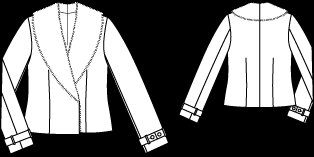
So here's the question. Which of these two styles would you choose to wear over the dress? Can two vaguely shirt-style collars get along? What if I modified choice #1 so it's single breasted with a slightly lower front neck (maybe 5cm or 2" lower)?
Any other pattern suggestions for my hypothetical jacket?
I have a feeling I know what you're going to say, but go ahead anyway!
(PS - I do remember I've got some UFOs in the sewing room, but a girl can daydream...)
Witchcraft during Wartime: the trial of Helen Duncan
In earlier columns I have written about wartime cases to reflect on present-day problems. Such cases are often the most instructive, because it is during wartime that a legal system is under the greatest strain, and how it reacts to that strain says a great deal about the system. Previously I have considered cases where the law reached the right conclusion. This month, however, I am concerned with a case which should never have been brought at all: that of Helen Duncan, often (incorrectly) said to be the last person in Britain to be tried for witchcraft.
Duncan held herself out to be a spiritual medium. She received minor convictions for fraudulent activities relating to her "trade" before the Second World War, but acquired lasting fame during the conflict by telling one anguished person during a séance that her son’s ship, HMS Barham, had been sunk.
News of this revelation caused alarm in Whitehall. The Barham had indeed been lost, but the Navy had suppressed the information. The reason was that intelligence had revealed that the Germans did not know about the sinking, since the U-Boat commander responsible had been unsure. Several other capital ships had been lost around the same time, and news of the Barham’s loss would have been a severe blow to morale as well as a German propaganda victory. Fearing that Duncan had access to its secrets, therefore, the state decided to put her out of business.
After some impressive pre-internet legal research by the prosecution, Duncan was charged under s 4 of the Witchcraft Act 1735, concerning “fraudulent spiritual activity” (rather than witchcraft per se). The trial that followed veered towards farce, with a number of apparently respectable people prepared to testify that her powers were genuine, but with the judge prohibiting Duncan herself from “proving” her abilities in court. She was eventually convicted by a jury and imprisoned for nine months.
After the trial Churchill lambasted the case as “tomfoolery”, and it is hard to disagree. It seems absurd that the authorities thought Duncan either a genuine medium or privy to state secrets: the fact that she guessed that a ship during wartime had been sunk hardly constitutes proof of anything.
If Duncan had indeed improperly obtained state secrets, she should have been charged on those grounds accordingly. If that was the true reason for the trial, however, but the prosecution chose instead to prosecute her under the Witchcraft Act for its own convenience, then that looks like a misuse of the legal system.
The most persuasive ground for the law’s intervention was that Duncan was exploiting the vulnerable, and that argument of course applies to all others in her vocation. There is clearly some justification for the state prosecuting charlatans. Then again, if people derive comfort from falsity, why should others object? In a free society, if competent adults wish to pay for such “services” they should have the right to do so, both as an exercise of the right to freedom of contract and the right to freedom of religion.
On the other hand, trading standards usually require that vendors do not offer for sale something they know to be false, particularly when the prospective purchaser is likely to be vulnerable.
In the absence of blatant trickery, however, the question of proof in either direction is an interesting one; after all, a good many intelligent people seem to want to believe in the Loch Ness monster, and it is not as if the veracity of mainstream religion is any more open to scientific proof. In all seriousness, the state is generally best leaving such things to the marketplace of ideas.
At most, spiritual mediums and similar types should be the concern of trading standards rather than the criminal law. There may come a point where coercion or deception merits criminal proceedings, but existing laws against intimidation or fraud should suffice in those cases. Otherwise, commercial regulation rather than specific criminal offences should be the extent of the law’s intervention, the aim being to restrict misleading advertising or otherwise protect the vulnerable rather than shut down the business altogether.
The justification is that the state should adhere strictly to the separation of church and state. On the one hand, the state should not seek to outlaw peddlers of religion and spiritualism. On the other hand no funding or official sanction should be given for spiritual or religious activities, “mainstream” or otherwise. Rather, the state should concentrate on education, surely the consumers’ best weapon against snake oil salesmen of any kind.
Coda: Recently, supporters of Duncan campaigned to have her pardoned. They were unsuccessful, though their website seeks to assure everyone that Duncan's powers were genuine. Readers can judge that one for themselves.
Friday, January 7, 2011
Panama and Qatar Sign Tax Agreement
HH the Emir Sheikh Hamad bin Khalifa al-Thani and Panama President Ricardo Martinelli witnessing
the signing of an agreement on the avoidance of double taxation and prevention of fiscal evasion
with respect to taxes on income and the protocol between the governments of the two countries in New York.
See also:
Panamá y Qatar firman tratado para evitar la doble tributación
Qatar and Panama sign agreement
Panama and Cyprus Discuss Tax Agreement
Meeting of President Christofias with the President of Panama
23/09/2010
The President of the Republic Mr Demetris Christofias had a meeting, yesterday, with the President of Panama Mr Ricardo Martinelli.
Present at the meeting was also the Government Spokesman Mr Stefanos Stefanou, the Permanent Representative to the UN Ambassador Minas Hadjimichael and the Director of the Diplomatic Office of the President, Ambassador Leonidas Pantelides.
After the meeting President Christofias made the following statement:
"I had a very cordial and friendly meeting with the President of Panama, which he requested. Panama is a friendly country to Cyprus, we are together at the Non – Aligned Movement for several years, with a very firm position on Cyprus issue. Of course, the President has reaffirmed his position that Panama stands by Cyprus in its effort to reunite the country and implement the international law and the UN Resolutions on Cyprus.
Moreover, we talked about the need to expand bilateral relations between the two countries. Agreements are underway about the avoidance of double taxation and, also, the abolition of visas in both countries. We also talked about the need to develop economic relations between the two countries. The distance is great and this is the only problem, but I believe that there is enough that connects us, which we should take into consideration."
Asked if the possibilities of cooperation between the two countries for shipping issues were discussed, the President of the Republic said:
"These issues were discussed a few times, they are on the agenda too, but I repeat, the distance is great. The Government of Panama is doing whatever possible to avert the docking of the ships under Panamanian flag, in Famagusta".
www .presidency.gov. cy
See also:
Panamá y Chipre firmarán tratado para evitar doble tributación
New Ambassador of the Republic of Cyprus to Panama - 03/11/2010
New bike jacket
I made my first iteration of this jacket from a synthetic known as "super microft", also sourced at Textile Outfitters. While this jacket is still very functional and not too worn out, its time is coming to an end. It lost some of its water-resistance over the years and the wash-in stuff (Nikwax) seemed to interfere with its breathing ability. The reflective tape is worn out in spots and looks quite ratty (though it's still pretty reflective).
Here's the front view. This is an extremely basic design featuring roomy raglan sleeves and stand-up collar.
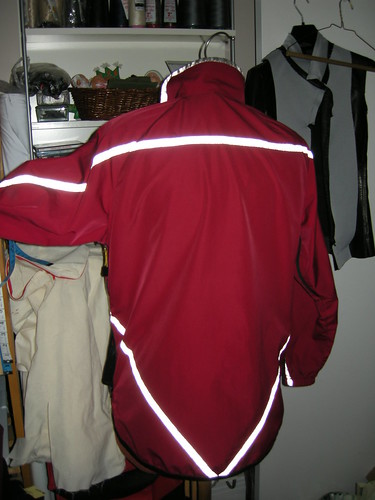
There's a low curving hem in back to guard against gaposis.
I added reflective tape all over the place for visibility. I ride my bike to work except when there's snow and in the fall, it's really dark on my way home.
At the side, there is a lot of zipper. The zip below the reflective tape is the pocket; above it is the "pit zip". This is a zipper (18" or 45cm long) that's closed at both ends with 2 pulls that meet anywhere in the middle. It's inserted in the side/underarm seam and provides ventilation.
I had the forethought to purchase 3 sets of pit zips at Textile Outfitters and after 15 years have 2 left. That should be a lifetime's supply, I figure, at the rate I'm going!
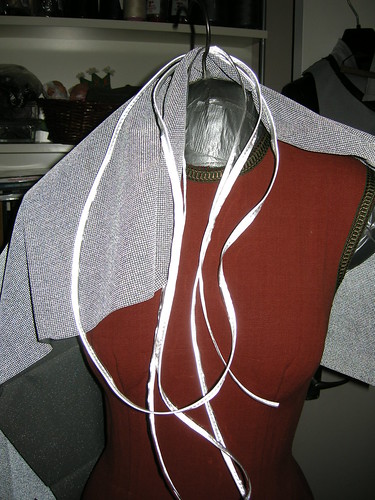 My new jacket will be more substantial than this one since I'm making it from Goretex and it needs to be lined to protect the membrane. I've got some athletic mesh lining in the stash. To further increase ventilation, I'm splitting the back to create an upper back vent (sort of like the back of a trenchcoat).
My new jacket will be more substantial than this one since I'm making it from Goretex and it needs to be lined to protect the membrane. I've got some athletic mesh lining in the stash. To further increase ventilation, I'm splitting the back to create an upper back vent (sort of like the back of a trenchcoat). To make my new jacket as safety-conscious as my old one, I'm going to use some retro-reflective plastic piping (looks clear in ordinary light) and as an accent on the back (from the stash), fabric with an overall retro-reflective print (looks boring grey in ordinary light). Flash!
Thursday, January 6, 2011
Coal Miner's Daughter (1980) & Walk The Line (2005)
Today Natalie Portman is getting criticism on The Guardian from professional ballerinas for her latest role in the movie Black Swan. The problem: you cannot learn to be a professional ballet dancer in one year, yet, the film uses an actress instead of a ballerina for the role. I have watched Walk The Line multiple times thinking it is a film about the artist Johnny Cash and his journey from childhood to finding his creativity and then success. This time around I noticed that the actor Joaquin Phoenix, who does his own singing here, is not a good singer. His vocals are continually autotuned (a corrective effect added after a vocal take to pitch any out-of-tune notes) and his delivery is nothing magical or touching. The truth is: Johnny Cash had an exceptional presence, which is what made him special, and it is insulting to claim that a little method acting could lead Phoenix to the same results.
Therefore, the problem with Walk The Line is that the musical content is not convincing enough for the story to be centered around Cash's creativity and talent. The film thus becomes a relationship movie about Johnny and June.
Coal Miner's Daughter is a 1980's version of the same kind of musical bio pic. Although the film appears stronger as a piece of cinema with a look and a mood of its own, it also emphasizes childhood trauma and hetero relationships. What is taken for granted or dismissed is the very interesting personal development of the artist's passion for expression through singing. How does the character (Loretta Lynn) nurse and maintain that need for this expression in her surrounding? The subtle internal movement towards realizing her vocation remains without any visualization in Coal Miner's Daughter.
Of course, it would be difficult to picture the creative processes of individual artists in film. It would be challenging to get into detail without looking boring, unmoving and slow. Picturing human internal processes of emotions and ideas may even not be the purpose of cinema, which usually shows us the immediate results rather than the getting there. Further more, Coal Miner's Daughter and Walk The Line do not fulfill the need in me to question and inspect the career development of these artists. How does it feel to be successful? What about criticism? What about failures? And the relationships to co-workers, other performers, musicians, the band and so forth? What is interesting to me as an artist myself is not so much the family story or the love story (everyone produces those), but the narrative of a specific form of expression.
Nick:
The glamorous easy lives of Rock n Roll stars. I live with a full-time musician, and am also a songwriter and record producer myself. So amongst the myth making, we never hear about: the song writing struggles, the band forming woes, the rehearsal room focus, the endless hours in the studio or at home refining, the tours without audience, the blatant sexism, the no money, the uncertainty, the critical backlash, the lack of recognition, the no future for you here, the constant self doubt, the 'am I throwing my life away' moments, the sacrifice of every normal aspect of your life. In fact, would I become an active musician in 2011, starting from scratch? No thanks.
Me and my partner are two of the most hard working people I know. Still friends ask Astrid what she's been up to, her reply 'working' usually met with that look that suggests that's not real work. Of course, there's the good points. The acknowledged greatness, the special talent tag, the otherness. The wanting to get to know. The possible financial gains. Traveling to different climbs and, in some cases, the promise of a better life. For some, and I include myself here, it's enough to have a life of creativity. For others, it's the wealth and, yes, the glamor.
So, film and music bio-pics. It's a long tale of missed opportunities clogging up any real perspective. When James Mangold directed Walk The Line, did he really intend to take most of the danger out of Johnny Cash? I mean, this is the Man In Black we're talking about? This is the raised-finger Johnny Cash, surely. What we get in Mangold's film is Joaquin Phoenix (too short!) mumbling away, Reese Witherspoon supposedly good as June (we only have the awful Legally Blonde to compare). Walk The Line is a sanitized mainstream film with no danger. It's Johnny Cash! How can you do it Hollywood!? And please, what's the auto-tune to death on Phoenix's voice doing (Arghhhhhh!). Still, tasteful and entertaining all the same. Is that good?
Michael Apted directs the Loretta Lynn story Coal Miner's Daughter as if a made for TV movie. Great turns from Sissy Spacek, Tommy Lee Jones and The Band's Levon Helm can't save this from being underwhelming. It touches on the mundane realities of touring but ignores any real portrayal of creativity and what makes Loretta so special. Still, it's worth a look. But what both these films do is sacrifice any real perspective on what got us interested in these people in the first place. Yes, The music. Ain't got no soul.
Wednesday, January 5, 2011
Working through it
Granted two of them were cut out before the end of 2011, and they are all from Jalie patterns, which are renowned for their ease of construction and general reliability. However, the Sewing Lawyer is taking her accomplishments as the victory they are over the dreaded whatever-it-is that makes it painful to swallow, and has turned her brain to mush.
First, a version of Jalie 3024. Oh, is this supposed to be a dress? I thought it would make a really nice workout top, and indeed it does. I made the crossover bodice, front and back. The fabric is a thin cotton knit which I purchased at PR Weekend Montreal. Fitting, since that's where the dress pattern was first débuted to the sewing world.
Here's the back.
I used self fabric for the neck and armscye binding, a technique which is included in this pattern and also had its world début when it was demonstrated by Jeanne Binet at PR Weekend Montreal. There's also a little illustrated tutorial here (yes that is the same fabric I've used for my new top). It is a super-simple technique which produces great-looking results without elastic. Genius!

Peeking out at the neck edges of this new top is that same periwinkle blue supplex seen in my previous post - it's a new sports bra also made from the Jalie dress pattern. This time I used elastic (the pattern is well-adapted to make the switch) and stopped at the under-bust band, adding elastic there for security.
I decided to make this piece for two reasons - first the Jalie top is too low cut for any other exercise bra I own, and second, I had the fabric and wondered if it would work. It does. I cut the neckline scoop a tiny bit higher so it would show. Jalie 3024 is quite a versatile pattern.
Then there is Jalie 2795, the zip-front hoodie designed for fleece. Another winner from Jalie. I love the high neck and the kangaroo pockets. The only negative to report is that the sleeve length is extra-gorilla-long. It is designed with a cuff (width about 2.5" or 6cm). The piece is still sitting in my sewing room. I turned up 1" (2.5cm) for a hem without it and the sleeve length is perfect.
I made this from a "fleece end" purchased at Fabricland for the princely sum of $8 which I believe is Polartec PowerStretch. It's gorgeous cozy stuff although a bit fiddly to topstitch.
The resulting jacket is the perfect thing to wear while sipping hot tea and reading murder mysteries!
Tuesday, January 4, 2011
The Social Network (2010) Directed by David Fincher
Nick:
Hello 2011. It's been a year since we started My Lawyer Will Call Your Lawyer. And in that year we posted 134 times. That sounds like a lot. Thanks to the people who have been reading regularly, or occasionally drop by. 2010 has been such a topsy-turvey year personally that I'm quite glad to see the back of it. Work issues, health issues and other issues have meant it's been quite a hellish year for me. This blog has offered light relief. The other constant has been Facebook.
I'm a big fan of Fincher (Seven, Fight Club & especially Zodiac) and of Aaron Sorkin (I had a serious love-in with West Wing). So, with direction and script duties in such good hands, it's safe to say there is quality involved with The Social Network. My initial reaction after watching the film: this is a picture about young people made by middle aged people. NIN's Reznor making the soundtrack, The Beatles supplying the end song. Wrong generation. I still can't shake that. But more shocking for me was the skill involved in bringing Mark Zuckerberg's 'success' story about the creation of Facebook to the screen and how it drew me in as a viewer, despite me being repulsed. A case in point being Justin Timberlake, inspired casting as slimey Napster creator Sean Parker.
These people start out as rich, privileged people. So, are we to applaud their ability to make even more money from great ideas as the movie suggests? And yes, we're still making them richer, to satisfy our own needs for connection. The irony of The Social Network is that in portraying Zuckerberg as social outcast, we get some picture of an individual unable to connect in real life situations. Fincher and Sorkin show us this exclusive world of repressed nerds in a non-judgmental way. I don't personally care for these spoilt rich kids. I'm not impressed that Zuckerberg became a billionaire by 25. The film constantly tells us he doesn't care for money, even though most of the picture he's protecting his vast wealth. My punk instincts damages my view of this picture but also shows up my own inadequacy. I logged onto Facebook as soon as I got in from the cinema. I promote various opinions and even this blog through Facebook. So Zuckerberg has me in thrall. He's won, for now. The class war still rages. The Social Network is brilliant yet cold, a film for our times.
Astrid:
The Social Network is a movie reflecting the current state of the world. It was the movie of 2010 according to many end-of-the-year polls. It has potential to become significant and not least because it describes events that took place only seven years previously – we like to move fast now. It is definitely a piece of cinema with a distinct Fincher look, and yet I cannot help to be left with the feeling that instead of a film I am watching layers of recent history mixed with the celebrity cult on fast forward.
Where the money goes, that's where our heads turn. Just this morning I read in the news that Facebook is now worth 50billion dollars. While I embrace the invention, watching The Social Network makes me
painfully aware that I am not using Facebook, it is using me. It did not take long for the invention to go from connectivity and curiosity to a commercial trap. The sad news is: that's the story of our lives these days, what ever we do, invent or create.
I am struggling to express how layered in socially important meaning this film is. I lack the perspective of time, I don't have distance. As I sat in the audience I was irked by the kinds of people The Social Network described. I feel uncomfortable realizing that power is still distributed to those sons who were born to money, those boys who made it to Harvard, and those generally who are skilled enough to lie believably and who socially pass.
Hacking. I'm beginning to use the word a lot. My prediction: so will you in the year 2011.
Панама корпорации закона
Площадь: 77 000 кв. км.
Численность населения: 32 560 000 чел.
Столица: Панама
Государственный язык: испанский, английский
Денежная единица: бальбоас, доллар США
Преимущества:
- Панама является офшорным центром уже более 75 лет.
- Нерезидентные компании освобождены от налогообложения.
- Соблюдается конфиденциальность информации о владельцах, акционерах, директорах.
|
Source: Tax Consulting UK.





